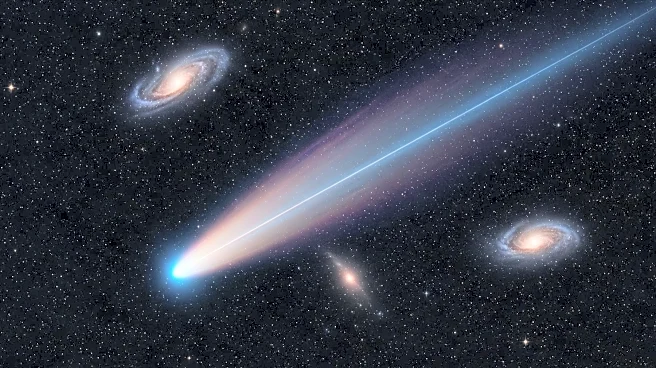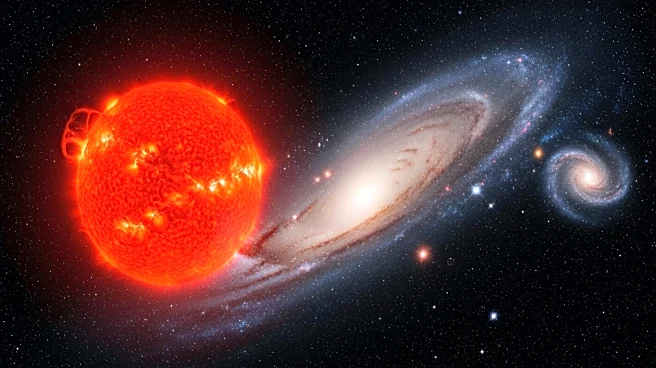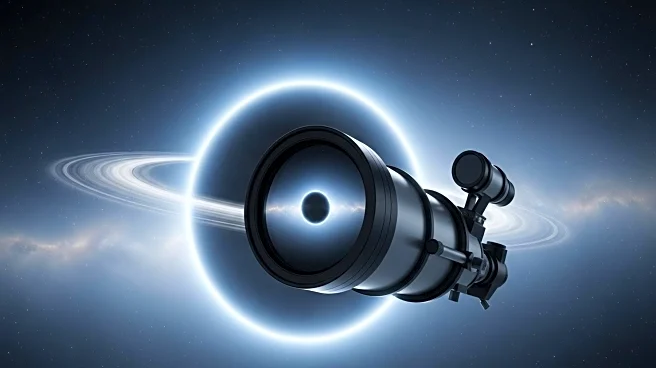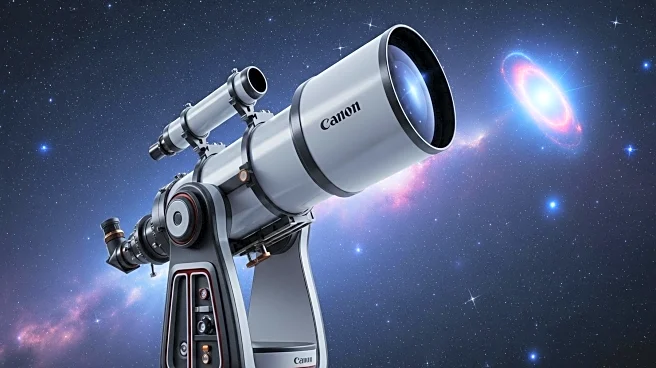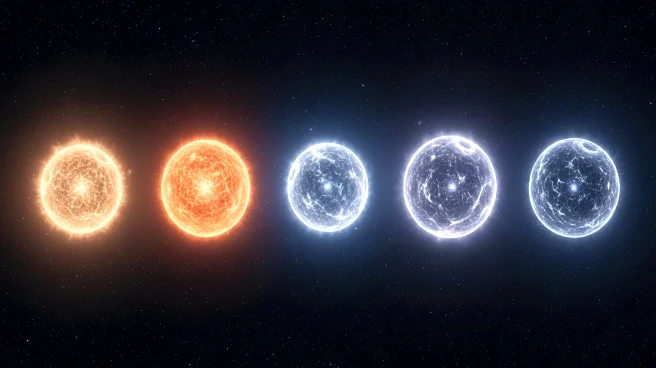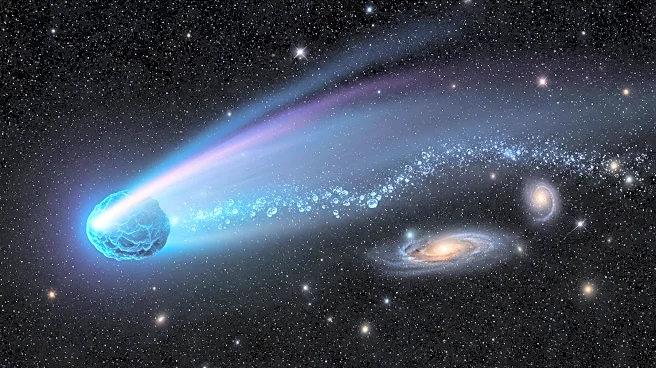What's Happening?
Astronomers have discovered a unique space object, designated ASKAP J1832-0911, that emits radio waves and X-ray bursts every 44 minutes. This discovery was made using the Australian Square Kilometre Array Pathfinder telescope during routine sky surveys. The object is located 16,000 light-years from Earth and exhibits a consistent emission pattern, distinguishing it from typical astronomical phenomena. Lead researcher Andy Wang from Curtin University describes the object as unprecedented, with findings published in Nature journal. Unlike conventional pulsars, which emit signals milliseconds apart, ASKAP J1832-0911 operates on a different timescale, suggesting novel physical processes. NASA’s Chandra X-ray Observatory confirmed the radio detections, marking a rare achievement in astronomy.
Why It's Important?
The discovery of ASKAP J1832-0911 challenges existing astronomical models and assumptions about stellar remnants and magnetic field interactions. It belongs to a rare category known as long-period transients, representing less than ten catalogued objects in the observable universe. This finding could reshape our understanding of stellar evolution, particularly in binary star systems. The precise 44-minute periodicity and simultaneous radio and X-ray emissions suggest sophisticated physical mechanisms not fully captured by current theories. The implications extend to broader questions about galactic evolution and stellar death processes, potentially requiring revisions to textbooks and models of cosmic phenomena.
What's Next?
Future research aims to unravel the mystery of ASKAP J1832-0911, potentially revealing new physics or necessitating modifications to stellar evolution models. The detection methodology sets new standards for transient astronomy, suggesting many similar sources may exist below current detection thresholds. Advanced space missions and lunar-based telescopes could enhance observational capabilities, revealing fainter sources and enabling precise timing measurements. The discovery may lead to identifying additional long-period transients, fundamentally reshaping our understanding of stellar life cycles and remnants.
Beyond the Headlines
The discovery of ASKAP J1832-0911 may reveal entirely new categories of cosmic phenomena, challenging existing theories about magnetized stellar remnants. Competing hypotheses suggest it could be an ultra-slow magnetar or a binary white dwarf system, both requiring sophisticated physical mechanisms. The broader implications for astrophysics are profound, potentially illuminating the formation mechanisms of neutron stars, black holes, and other exotic remnants.


